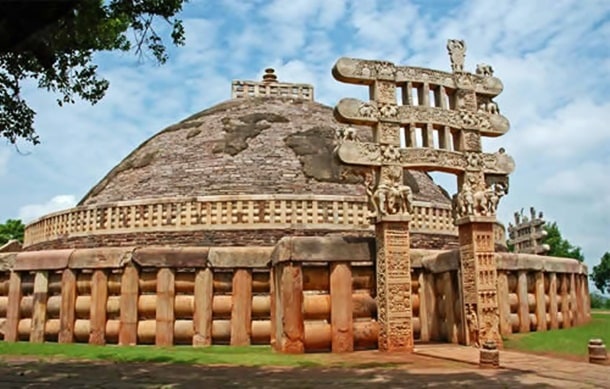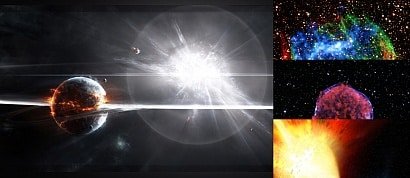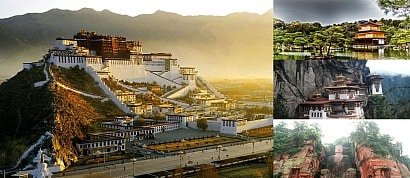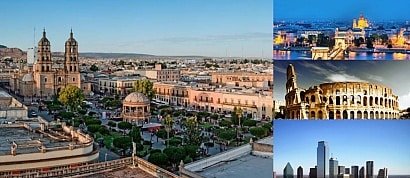Incredible Cities Lost In Time

Sanchi
It took more than a thousand year to build this city, which started in the 3rd century until the 13th century. It began to decline following the decline of Buddhism in India. The city was rediscovered by a British officer in 1818.

Palmyra
Palmyra was a wealthy city situated between Persia and the Mediterranean ports of Roman Syria. Known as the “city of palm trees,” this city began to experience a decline in its trade in 212 A.D. after the Sassanids’ occupation of the Tigris and the Euphrates. In 634 A.D., the city was captured by the Muslim Arabs until it turned into an oasis village.

Ctesiphon
This city existed during the 6th century and was known to be one of the largest cities in the world. Being one of the most famous cities of ancient Mesopotamia, the Roman Empire and later the Byzantine Empire sought to capture the city until it fell to the Muslims in 637 A.D. during the Islamic conquest.

Timgad
A Roman colonial town located in Algeria, Timgad was founded by Emperor Trajan in 100 A.D. When It was sacked by the Vandals in the 5th century and then two centuries later by the Berbers, the thriving city disappeared from history until its excavation in 1881.

Mohenjo-Daro
This city was built in 2600 B.C. in what is known today as Pakistan. It was one of the most ancient urban settlements ever established in the world, and is commonly referred to today as an “Ancient Indus Valley Metropolis.” Around 1700 B.C., the city vanished from history until its discovery in the 1920′s.

Great Zimbabwe
A complex of stone ruins, the Great Zimbabwe was built by the Bantu people during the 11th century. It had as many as 18,000 inhabitants at its peak but due to a significant decline in political stability and trade as well as dramatic climate changes, its people decided to abandon the city.

Hatra
Hatra was a vast fortified city that existed during the reign of the Parthian Empire. It successfully withstood several invasions by the Romans because of its high and thick walls and towers. In 241 A.D., it fell to the Iranian Sassanid Empire and was utterly destroyed.

Angkor
Located in Cambodia, this vast temple city features the remains of the Khmer Empire way back from the 9th to 15th century. Among the most popular attractions visited by tourists in this famous lost city is the Angkor Wat Temple, which is known today as the largest single religious monument in the world.

Hattusa
This city used to be the capital of the Hittite Empire during the 17th century. By 1200 B.C., it was destroyed as part of the collapse of the Bronze Age, until it was totally abandoned by its 40,000 to 50,000 inhabitants. Hattusa was only rediscovered in the beginning of the 20th century.

Chan Chan
The largest city of pre-Columbian America, Chan Chan is a vast city with buildings adorned with patterned relief arabesques. This city was called adobe city because its building material was adobe brick. Built in 850 A.D. by the Chimu, the city was conquered by the Inca Empire in 1470 A.D.

Mesa Verde
Located in the southwestern part of Colorado, Mesa Verde used to be home to the ancient Anasazi people. It was where these people built dwellings under rock overhangs and shallow caves. The people left the city in 1300 for some unknown reason, but its ruins have remained perfectly preserved since then.

Persepolis
The ancient capital of Persia, this city used to be the ceremonial center and capital of the Persian Empire. Known for its beauty, it used to feature some of the most beautiful artworks in the world during the peak of its existence. Persepolis was burnt to the ground by Alexander the great as he sought to conquer the Persian Empire in 331 A.D.

Leptis Magna
One of the most prominent cities of the Roman Empire, Leptis Magna used to be located in the country known today as Libya. It was a wealthy city that served as the center of Mediterranean and Saharan trade. The city began to decline during the reign of Emperor Septimius Severus, until it fell into ruin in 642 A.D.

Urgench
This city used to be located on the Amu-Darya River in Uzbekistan. It was one of the greatest cities between the 12th and 13th centuries and even became the capital of Khwaream, a Central Asian empire. In 1221, Mongol soldiers turned young women and children into slaves and massacred the rest of the population.

Vijayanagara
At its peak, this city had a population of around 500,000. It was one of the largest cities of the world between 14th and 16th century, during the reign of the Vilayanagar Empire. The city was destroyed following the victory of the Muslim armies who were in conflict with the empire.

Calakmul
One of the largest Maya cities, Calakmul was a powerful and wealthy city that used to defy the supremacy of Tikal. When it was rediscovered, it was hidden in the jungles of Campeche. The city saw a decline in its population following the battle raised by Tikal in 695 A.D., which led to the collapse of the Mayans.

Machu Picchu
Considered one of the most known lost cities in the world, this city has laid hidden for centuries on top of the Urubamba Valley until it was rediscovered by a Hawaiian historian named Hiram in 1911. Known as the “Lost City of the Incas,” Machu Picchu is surrounded by agricultural terraces and is entirely invisible from below.

Hvalsey
Hvalsey used to be one of the largest of the three Viking settlements in Greenland in 985 A.D. It was basically a farmstead where Norse farmers coming from Iceland used to settle. This city had 4,000 inhabitants at its peak but this number declined during the mid-fourteenth century, following the demise of the Western Settlement.

Palenque
Located in Mexico, Palenque features some of the most impressive sculptures and architecture of the Mayans. One of the smallest cities of the Mayan, this city existed between 600 A.D. and 800 A.D. but its population declined during the 8th century as it started to be overgrown by the forest.

Tiwanaku
Tiwanaku is situated near the south eastern shore of a lake in Bolivia known as Lake Titicaca. Between 300 B.C. and 300 A.D., this city served as a cosmological center for many people, which made it famous among people who make pilgrimages and had a population of up to 30,000. However, after a dramatic shift in climate, the inhabitants of the city gradually moved out.
Load more items (5 more in this list)
Since the 18th century, many explorations in different countries have led to the rediscovery of what we know today as the “lost cities” of the world. Reasons why these cities were lost in time and forgotten for centuries include the total abandonment of its inhabitants, climate change, massacres, conquests and natural disasters. Today, many of them are considered among the most famous tourist attractions in the world. Here is a list of 25 cities lost in time.
Added to
People who voted for this also voted for
Top 20 Best Simpsons Episodes
Anautix' favourite German Movies (1990-2009)
Art Nouveau | architecture and design
My Favorite aggressive Rock-Songs
Remember? part II
Close up (Macro) Photography
Favorite Gangster Films
my favorite movie posters
SuperNova
Favorite Martial Arts Films
painting by Issac Maimon
A little Buddhist list
Animals...October is Adopt a Shelter Dog Month
Greek films of the 1980s
Top 10 War Films
More lists from Milena
Most Surreal Places On Earth
Beautiful Houses Found In Forests
Photographs Of The World’s Most Famous Gardens
Excellent Photos Of Kenya By Diego Arroyo
Cities With Awesome Nicknames
Breathtaking Photos Of Earth’s Beauty
Adorable Hatchlings That Are Too Cute For Their...
 Login
Login























